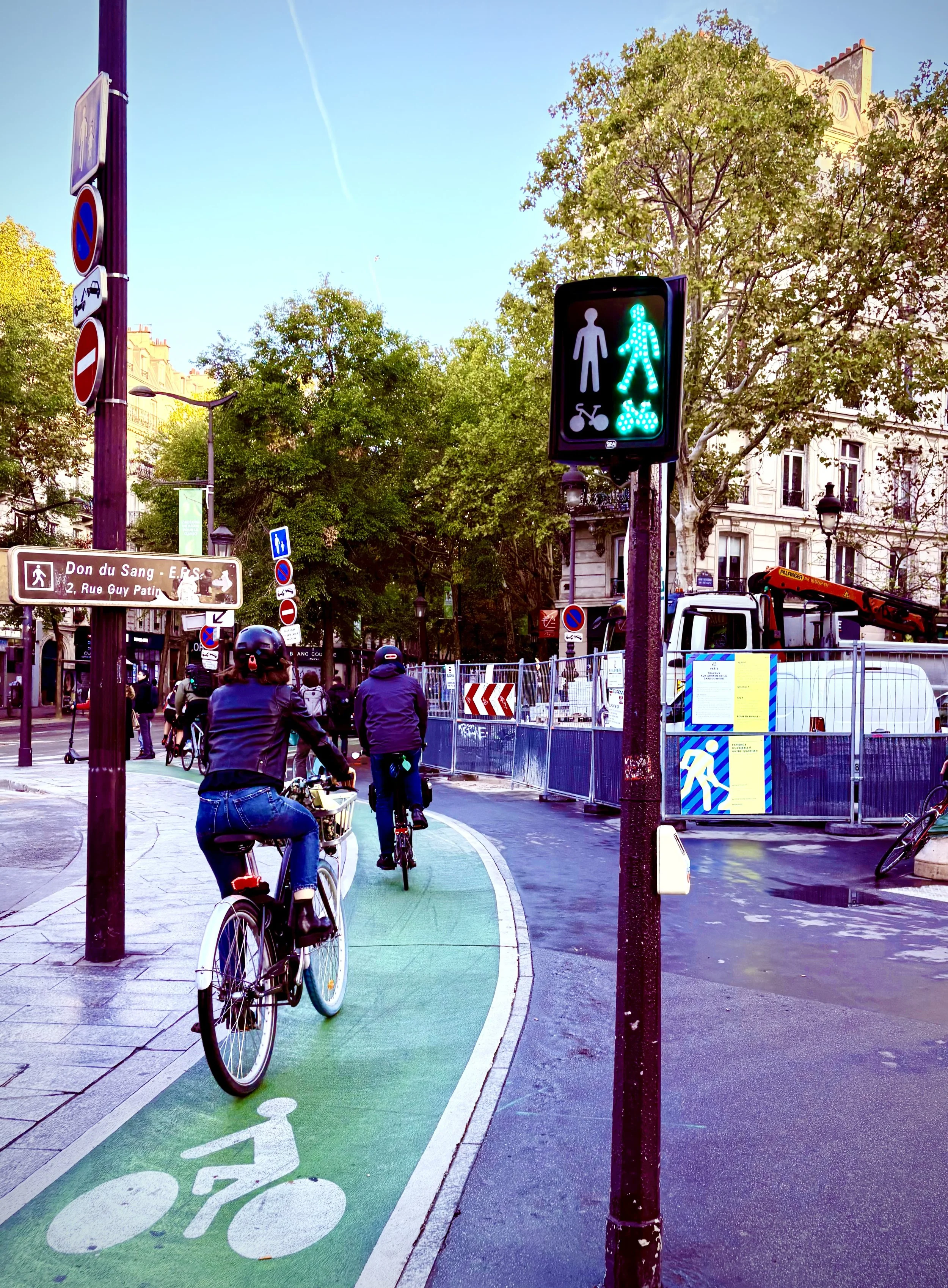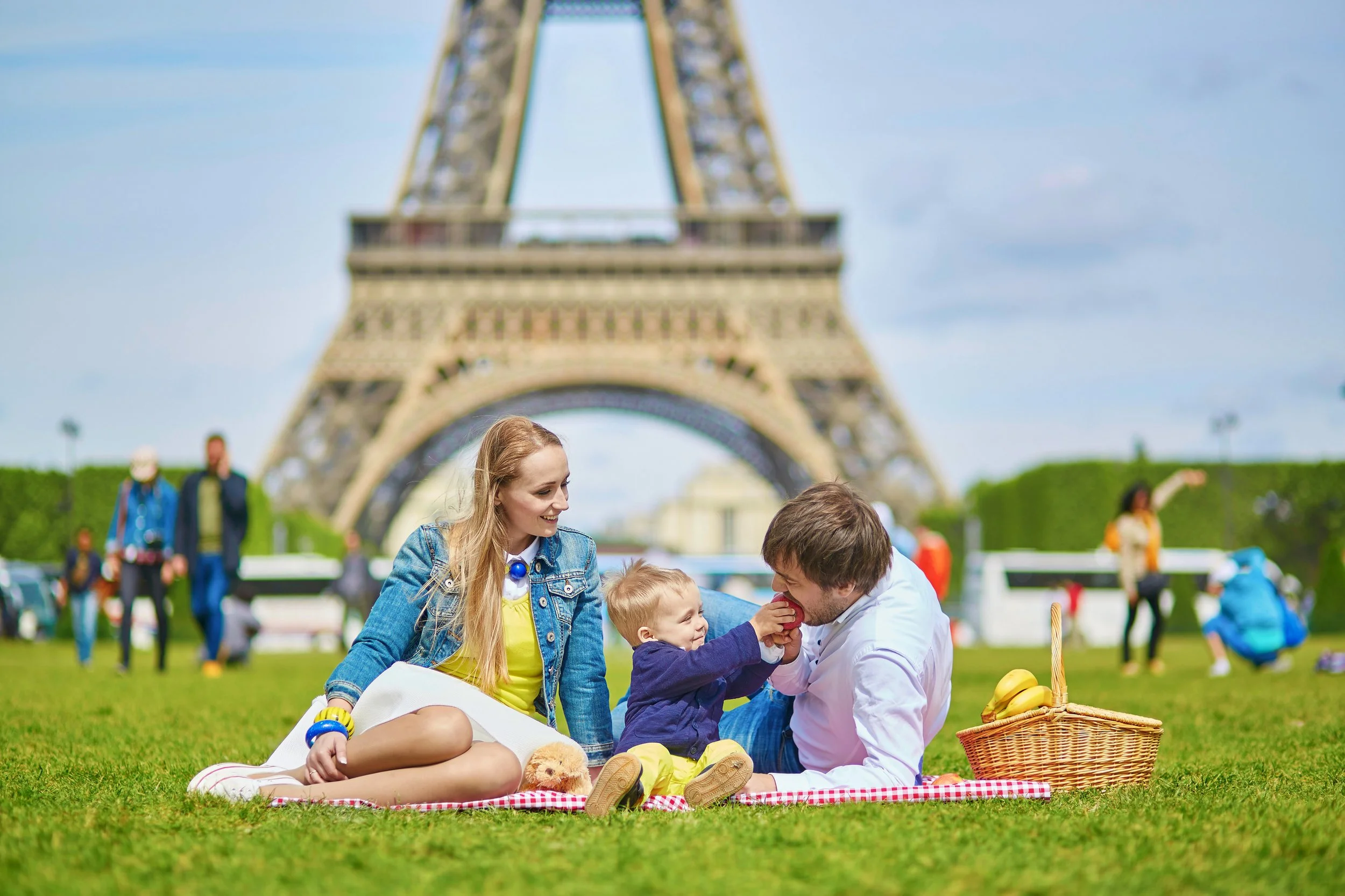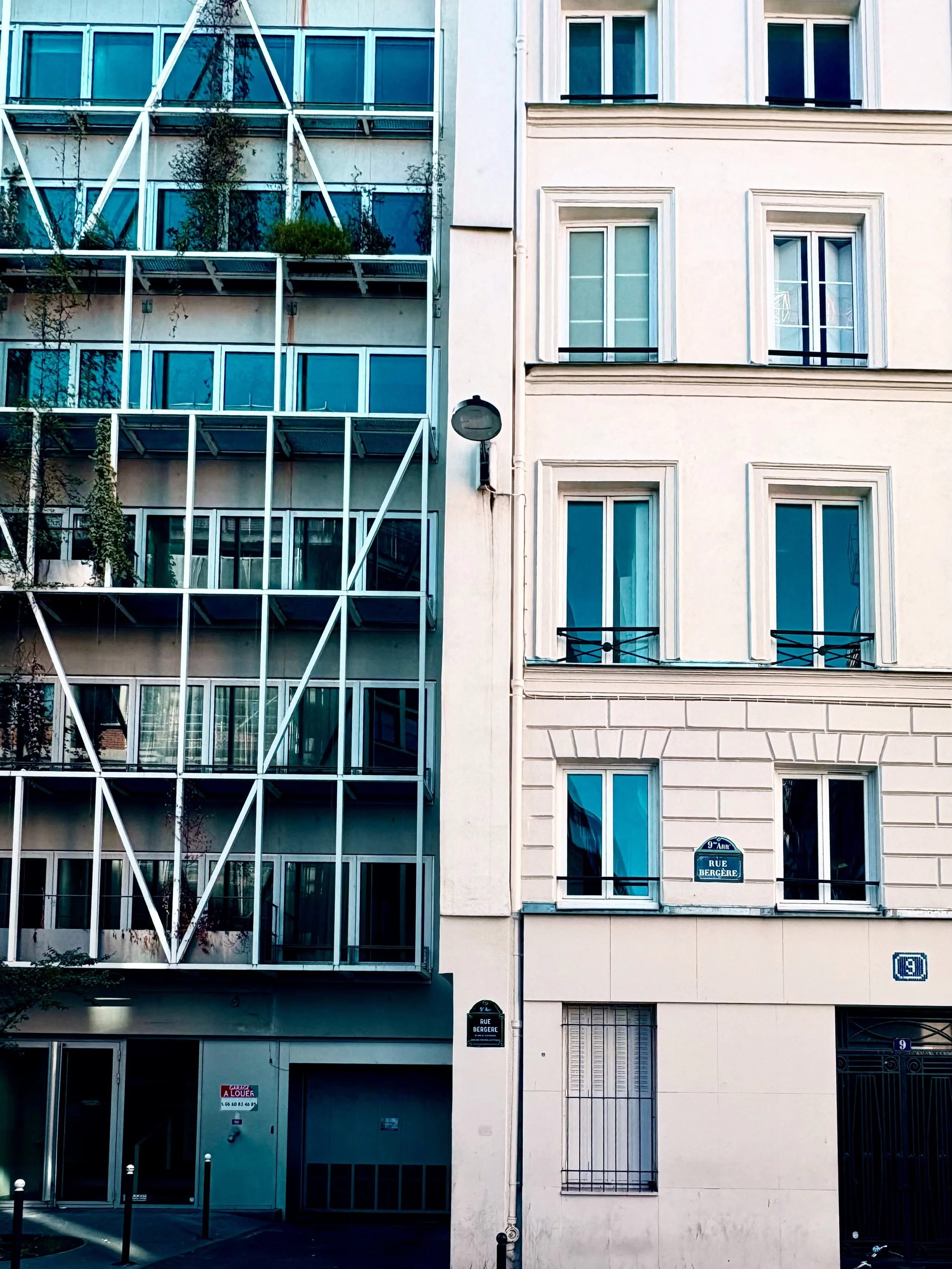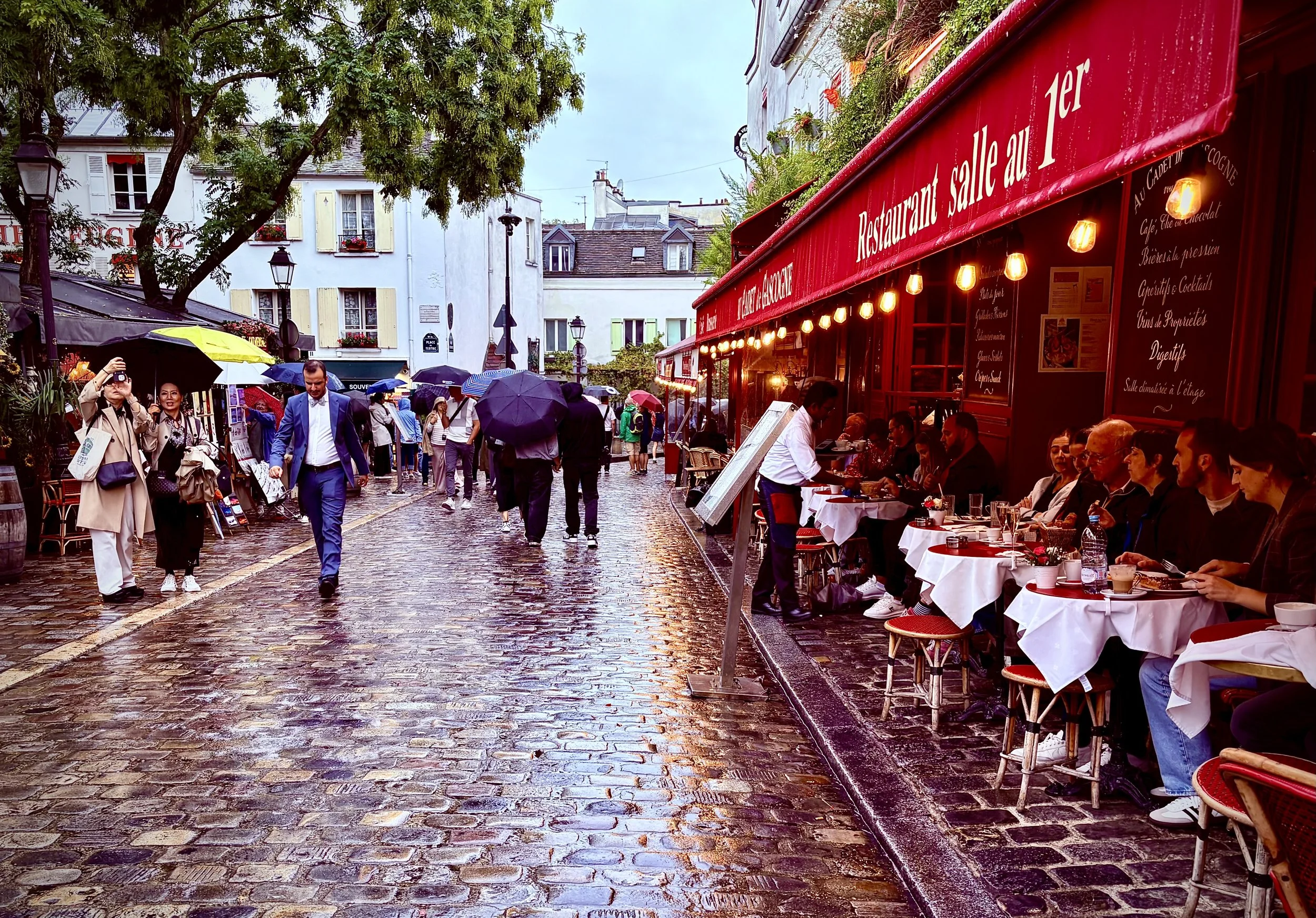Eight Big Ideas from Paris: A Planner’s Photo-Essay
Paris rewards the flâneur and flâneuse—the idle walker-who-observes. Every corner, every café terrace, every balcony seems to hold a lesson in how cities can shine, and evolve. During my recent wanderings in Paris, I gathered eight ideas—small gestures and grand visions alike—that reveal how the French capital is quietly reinventing urban life.
1. Guerrilla Public Art: CREATING MOMENTS OF Surprise
Delightful street art in Montmartre, Paris.
Photo by the author.
The first idea hit me on an ordinary corner of extraordinary Montmartre, the 18th arrondissement. A whimsical set of four slice-of-life “street photos” were affixed to the wall at the base of a publicly owned staircase in this hilly part of Paris. Interrupting our routines, these photos remind passers-by that creativity thrives anywhere. Paris hums with guerrilla public art, which makes the city feel alive, unpredictable, and participatory—an outdoor gallery curated by its citizens (and in this case, in particular, the street photographer who can be found at backtothestreet.com).
2. Reclaiming the Roadway: Pocket Parks and Micro-Mobility
Conversion of street parking in Paris.
Photo by the author.
In Paris, I saw a lot of experimentation with the once-sacred parking spaces in roadways. Some on-street parking has been reclaimed for pocket greenery and bike parking. A single parking stall becomes a mini-green and a bike rack—tiny but symbolic. These small interventions prove that street design doesn’t have to wait for grand budgets or sweeping reforms; incremental, low-cost shifts can re-balance space toward people, and away from cars.
3. Walking Streets: The Freedom of Slowness
Safe walking streets, throughout Paris.
Photo by the author.
In several districts, walking streets have taken over on formerly car-centred roadways. Only emergency vehicles may pass; even cyclists are asked to walk their bikes. It’s a quiet revolution—an insistence that streets are first and foremost public spaces for people of all ages and abilities. The result isn’t just better air; it’s better safety, and better conversation.
4. Layered Infrastructure: Walking and Cycling Together
Dual pedestrian-cyclist signs abound in Paris.
Photo by the author.
Paris’s newer emphasis on pedestrians and cyclists really stood out for me. Never-before-seen dual signage, distinct paving treatments, and plenty of mutual respect for these two modes of transportation. The coexistence of feet and wheels—each acknowledged as legitimate—suggests a city that’s learning from past tensions. Instead of competition for space, there’s some choreography between priority modes of getting around. Paris smells better. And I feel safer making my way about.
5. Balconies as Winter Gardens
Some balconies throughout Paris are glassed in.
Photo by the author.
Above street level, Parisians are also rethinking private space. Many older apartment balconies have been converted into glazed conservatories, miniature sunrooms that capture warmth and light in a city with long gray months. These glassed-in balconies appear to be permitted by city authorities. They are year-round extensions to living space that offer more than comfort; they illustrate how architectural adaptation can support wellbeing and climate resilience without (greatly) altering a building’s historic façades.
6. Permission to Sit on the Grass
Throughout Paris, families and friends picnicking and resting on the grass.
Photo by Getty Images.
A simple joy: unlike my first time in Paris in 1989, I noticed with pleasure on this trip that some Parisian parks now allow (or at least tolerate) residents and visitors to sit on the grass. What once seemed sacrilege—feet and butts off the lawns!—is now quietly accepted in places like the Champs-de-Mars and Parc Monceau, where families, groups of friends, and solo diners enjoy picnics on the lawn. This small policy change signals a broader philosophical shift: public spaces are for people’s use, not just for admiration. A democratic lawn is a radical idea.
7. Heritage and Innovation, Side by Side
Newer parkade (left) and heritage residential (right) sit side by side in a Paris street.
Photo by the author.
Nowhere is Paris’s evolution more visible than in its layered urban fabric. A sleek timber or glass and steel structure might rise beside a Haussmann façade; a historic square finds a way to integrate a modern tram line. The effect isn’t jarring but poetic. I see dialogue (or debate?) between centuries’ worth of city planners and urban designers. I see urbanism where each generation writes lightly over the last, never erasing it entirely.
8. Café Life: Facing the Street
Even on a rainy day, cafe culture is still hopping in Paris.
Photo by the author.
And finally, there’s the timeless lesson of the Paris café terrace on virtually every high street in every arrondissement. Chairs lined in a row, all facing outward—not inward or towards one another—because the show is the street itself. It’s urban theatre for all who take a seat: people-watching as a joy. Sitting shoulder-to-shoulder with friends or strangers, you feel part of the collective pulse of the city. You are both audience and participant in a full life worth living.
Conclusion
Bonus pic: Paris at sunrise.
Photo by the author.
Paris continues to teach us that great cities tap into their historic roots, but evolve over time. Whether through guerrilla art that comes and goes, a reclaimed parking stall, or a café chair that turns at a new angle from the street, the message to me is that cities are living organisms, best nurtured through urban curiosity and deep care for each other and the environments that surround us. Even the smallest urban gestures can ripple outward—turning ordinary streets into extraordinary experiences.









